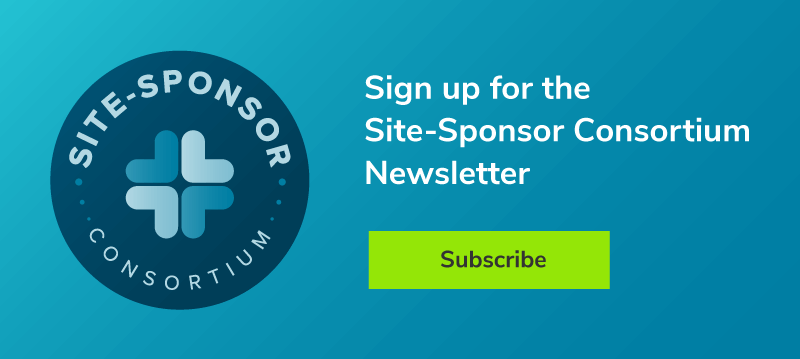Beginner’s Guide to Connected Clinical Research Ecosystems

A well-managed, participant-centric clinical trial has many moving parts, and easy access to the right technologies, services, and community of experts can make a significant difference. To meet this need, solutions providers have taken the approach of consolidating the knowledge, technology, and supporting services needed to efficiently conduct trials.
This approach eliminates the need for sites to perform ad hoc searches for technology and services, providing them with access to a comprehensive, technology-connected clinical research ecosystem. By addressing key challenges for research sites, this enables safer, more ethical, compliant, and efficient development of potentially life-changing therapies.
Choosing a Technology-Connected Research Ecosystem
When conducting a successful clinical trial, it takes a combination of staff, participants, and supporting technology. However, given the growing complexity and lower time to market expected of many current studies, sites and sponsors must find ways to conduct efficient and collaborative trials while meeting strict regulatory requirements. One way to do so is through adopting a connected clinical research ecosystem. There are many facets of a connected ecosystem, all aiding in a successful clinical trial.
Industry-Trusted IRB/IBC Review Services
The main purpose of the institutional review board (IRB) is to protect the participant’s rights and welfare. Meanwhile, the institutional biosafety committee (IBC) protects participants, study staff, and the community from risks associated with genetically engineered treatments and vaccines. While IRB oversight is required for most research involving human participants, IBC oversight is only required for research involving investigational products containing engineered genetic material.
While some sites may have a local IRB and/or IBC already onsite, it’s become increasingly important to also identify an independent review partner, particularly for industry-sponsored research. Specific to multisite studies, independent IRBs and IBCs provide more efficient review processes, which is appealing to industry sponsors.
So how do you find the right fit for your organization? Look for an independent IRB (and IBC as appropriate) with processes ensuring efficient quality documentation delivery while providing dedicated, attentive service and expertise to support your research. Additionally, choosing electronic systems will enable smarter and faster workflows while maintaining high transparency and quality standards.
Here are some basic criteria for evaluating the review services of an IRB or IBC:
- Review the IRB or IBC meeting schedule to ensure it meets your researcher’s and stakeholder’s needs
- Ensure use of electronic tools and dedicated staff for easy, efficient study administration. Their tools should be appropriate for your internal workflows
- Request a demo and training, confirming there is an application programming interface (API) connection for added efficiency, if appropriate
- Review the committee’s current roster to ensure there is appropriate expertise to review the types of research your institution conducts
- Request a dedicated point of contact so you have a direct line of communication for any potential questions or issues
Finally, check if the Food and Drug Administration (FDA), Office for Human Research Protections (OHRP), or other regulatory authority has audited your IRB in the past. If so, it is a good sign if no FDA Form 483 was issued in the past 10 years or more. In addition, verify that they are registered with OHRP and FDA. It is also a good indicator of reliability if the IRB has full accreditation with the Association for the Accreditation of Human Research Protection Programs (AAHRPP) and a long history of compliance.
Clinical Research Management Technologies
Clinical research technologies can enhance trial performance, empowering clinical sites to streamline workflows at each study stage. This results in time efficiency, less effort, and reduced costs. It is important to verify the potential clinical research technology and services provider includes a full suite of technologies to optimize study processes. At a minimum, make sure your vendor offers the following technologies.
Clinical Trial Management System (CTMS)
The CTMS platform is designed to enhance study startup, participant management, finance, compliance, oversight, reporting, and more. A CTMS configures study needs and is scalable to any organization’s size or decentralized complexity. Additionally, the CTMS should also enhance the trial management process, compliance assurance, and finance control. Such a trial management system should also allow oversight across multiple departments, sites, and networks.
Site-centric clinical trial management systems include remote workflow-enabling options for two-way texting, secure video, and instant payments. Not only is this easier for the participant, a comprehensive CTMS also simplifies recruiting, visits, and the stipend payment process. The CTMS must also be comprehensive and effective over a multitude of trials to ensure the solution is likely to support your organization’s needs.
eClinical Solutions
eClinical solutions are participant-centric technologies designed to streamline source data collection, enhance regulatory management, and improve consent workflows. Adopting eClinical solutions such as eSource, eRegulatory management, and eConsent enables researchers to move away from costly paper processes, saving time and money in the process. These electronic systems help an organization become more efficient, compliant, and connected.
Professional Services
Any services accessible within a trial ecosystem should cover process improvement, establish best practices, and increase research productivity. The right services enable your organization to streamline study activation, maximize technology investments, alleviate administrative burden, and add breakthrough efficiencies with technology-enabled professional services. Below are some examples of specific services and consulting to look for.
Coverage Analysis
Tailored to a specific organization’s needs, a coverage analysis is designed to prevent workflow bottlenecks, reduce administrative burden, and streamline the study activation process. A completed coverage analysis may be delivered into a CTMS environment, matching study calendars and eliminating the need for duplicate data entry.
Budget Negotiation Services
Budget negotiations are typically one of the most time-consuming startup activities. By enlisting a budget negotiation service for help, organizations can accelerate timelines, alleviate budget negotiation burdens, and meet funding goals.
Research Staffing Solutions
Engage research professionals to fill short- and long-term core team roles on-site and remotely, keeping your clinical operations on track in the wake of staff turnover or unforeseen project needs. Unlike other consultants or outsourcing firms, our unique product expertise and ability to fulfill multiple roles contribute strategic advice and follow-through skills to complete projects.
Global Consulting
Partnering with a consulting team provides a proactive, comprehensive approach to navigating the research and development environment, ensures compliance, and mitigates risk throughout your trials.
Expert Community
A major part of a healthy clinical research ecosystem is having a large community of clinical trial experts to network with, identify potential roadblocks, and celebrate successes in conducting efficient research. Just as important is the scope and quality of their connection to the larger clinical research ecosystem.
Increasing Speed, Quality, and Revenue
The key to delivering a higher quality result faster, while increasing revenue to your organization, often involves combining technologies and services in the right way with your own study plans. Accessing the right choice of pre-vetted technology, supporting services, and seasoned experts provides a significant advantage. This is especially true with tailored technology and services for an organization’s specific needs. An organization with a wide range of pre-vetted technologies and services, paired with a knowledgeable team, provides much-needed guidance and assistance in a well-connected and resourceful ecosystem.


